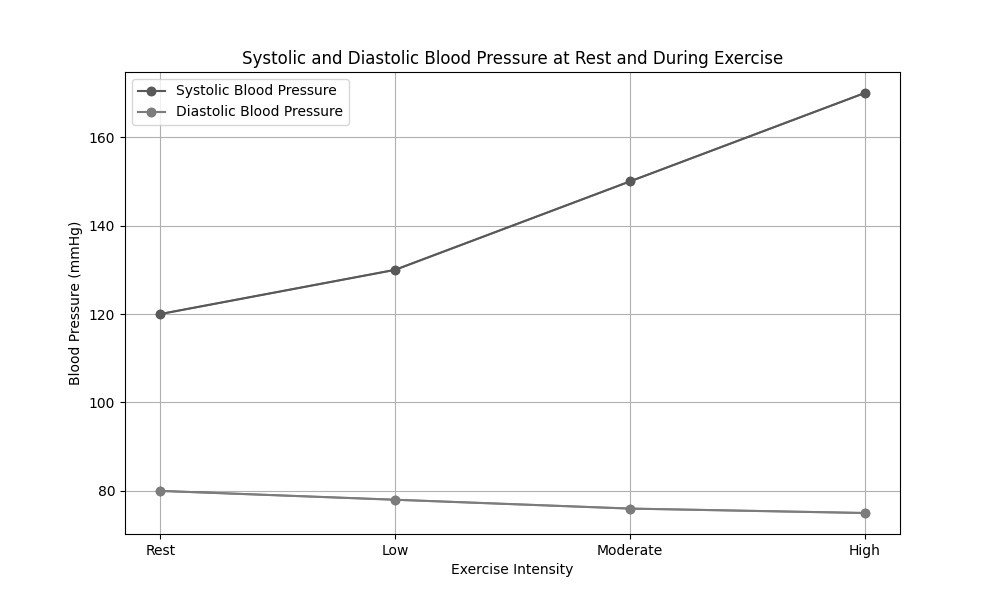

Describe the impact of DNA in shaping human traits.

Discuss the connection between physical activity and vulnerability to illness.

Explain the process of gas exchange at the alveoli.

Explain the regulation of epinephrine and insulin levels in the body.

Define systolic and diastolic blood pressure. Include the typical values for a healthy adult at rest.

Explain the physiological mechanisms that lead to changes in systolic and diastolic blood pressure during exercise.

Analyse the data in the provided graph showing systolic and diastolic blood pressure at rest and during different intensities of exercise.


Discuss the potential health implications of abnormal blood pressure responses to exercise, such as excessively high systolic or diastolic blood pressure.

Explain the differences in maximal oxygen consumption between running and arm ergometry.

Examine how maximal oxygen consumption varies with age for both trained and untrained individuals.

What are the four main components of the ventilatory system?
| Nose | Lungs | Epiphysis | Larynx |
|---|---|---|---|
| Alveoli | Lungs | Larynx | Epiphysis |
| Larynx | Trachea | Bronchi | Lungs |
| Lungs | Bronchi | Nucleus | Alveoli |

Outline two types of drag that can occur in swimming.

Describe why breathing remains elevated during the initial minutes following a swimming sprint.

Apply two health-related components of fitness to a marathon runner.

Recommend ways a triathlete (swimming, cycling, running) can reduce drag.

Distinguish between health-related and performance-related fitness.

Describe the exchange of carbon dioxide from the bloodstream during exercise.

Compare the Fosbury Flop and the scissors technique based on the position of the jumper's center of mass.

Contrast the blood distribution in a runner while at rest and during a 10,000 m race.

Describe the process of pulmonary ventilation in the human lungs during intense exercise.

Summarize the function of hemoglobin in transporting gases within the body of a trained athlete.

Define Newton's second law of motion.

Use Newton's third law of motion to explain what happens when a sprinter pushes off from the starting blocks at the beginning of a race.

Explain the most suitable teaching style for a coach to adopt when working with a group of beginner javelin throwers.

Provide an example to describe the features of saturated fatty acids.

Describe the concept of cardiovascular drift and one way to minimize it.

Examine the factors that influence which energy system becomes dominant.

Use the Bernoulli principle to explain the effect of topspin on the projectile motion of a tennis ball.

Outline three reasons why overtrained athletes may be more susceptible to infection.

Explain the differences in dietary recommendations for a training marathon runner and a sedentary individual both with healthy body mass index (BMI).

Describe how the pituitary gland is regulated by the hypothalamus.

Outline the nervous control and mechanics of inspiration during physical activity.

Which of the following statements best describes the change in systolic and diastolic blood pressure during dynamic exercise?

Distinguish between fibrous and cartilaginous joints.

Describe the essential elements of a generalized training programme.

Outline cardiovascular drift.

Discuss the characteristics of the lactic acid system during exercise.

Explain the process of oxygen exchange at the alveoli.
